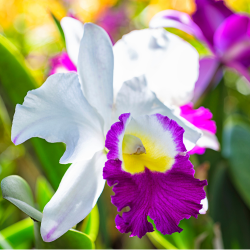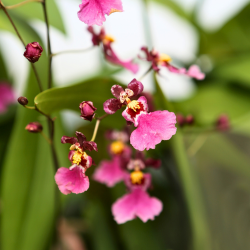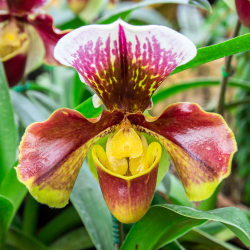
Orchids have long captivated the hearts of gardeners and plant enthusiasts alike with their stunning diversity and unique characteristics. Originating from diverse habitats such as tropical rainforests, temperate regions, and even deserts, orchids are known for their intricate blooms and often delicate appearances. Despite their reputation for being finicky, many orchids can thrive with the right care and attention, making them a rewarding addition to any indoor garden.
Why Orchids Are Special
Orchids have earned their reputation as special plants not only for their exquisite beauty but also for their remarkable adaptations to diverse environments. Their ability to thrive in various ecosystems, from humid rainforests to arid deserts, showcases their resilience and evolutionary sophistication. Orchids have developed unique relationships with pollinators, often relying on specific insects or birds for pollination, which adds to their ecological significance.
When you visit our garden center, you’re likely to find several different kinds of orchids available. By learning about the unique characteristics of different orchid types such as Cattleya, Dendrobium, Miltonia, Oncidium, and Paphiopedilum, you can better cater to their individual requirements and enjoy the rewards of their spectacular blooms.

Cattleya Orchids:
Queen of Orchids
Cattleya orchids, often referred to as the “Queen of Orchids,” are celebrated for their large, showy flowers and delightful fragrance. Native to Central and South America, these orchids prefer bright, indirect light and a well-draining potting medium. They are popular among orchid enthusiasts for their vibrant colors and the striking appearance of their blooms, which can last for several weeks under optimal conditions.
Dendrobium Orchids: Diverse and Adaptable

Dendrobium orchids are one of the largest genera in the orchid family, encompassing a wide range of species and hybrids. They originate from various regions including Asia, Australia, and the Pacific Islands. Dendrobiums are known for their cane-like pseudobulbs and clusters of flowers that bloom along the length of the stems. These orchids thrive in bright, indirect light and require regular watering during their active growth periods.

Miltonia Orchids: Graceful and Fragrant
Miltonia orchids, often called “Pansy Orchids,” are admired for their elegant, pansy-like flowers and delicate fragrance. Native to the cloud forests of Brazil and neighboring countries, Miltonias prefer moderate light and humidity levels. They are characterized by their long, arching flower spikes that bear multiple blooms. These orchids benefit from consistent moisture and good air circulation to prevent fungal issues.
Oncidium Orchids: Dancing Lady Orchids

Oncidium orchids, commonly known as “Dancing Lady Orchids,” are cherished for their petite, often brightly colored flowers that resemble dancing figures. Native to diverse habitats from rainforests to semi-desert regions in South America, Oncidiums are relatively easy to grow and can tolerate a range of light conditions from moderate to bright indirect light. They require regular watering but must be allowed to dry out slightly between waterings to prevent root rot.

Paphiopedilum Orchids: Slipper Orchids
Paphiopedilum orchids, also known as “Slipper Orchids,” are distinctive for their slipper-shaped pouches and elegant foliage. They are found in Southeast Asia and parts of the Indian subcontinent, often growing on forest floors or rocky terrain. Paphiopedilums prefer low to moderate light levels and high humidity. They are more forgiving in terms of watering, as their roots are sensitive to overwatering. These orchids bloom sequentially from a single flower spike and can produce flowers that last for several months.
Growing Orchids Successfully at Home
Successfully growing orchids at home requires understanding their specific needs regarding light, humidity, watering, and temperature. While each type of orchid has its preferences, most orchids benefit from bright, indirect light, consistent moisture (without waterlogged roots), and adequate air circulation. Choosing the right potting medium—typically a mix of bark, perlite, and sphagnum moss—is crucial for providing proper drainage and aeration.
With patience and attention to detail, orchid growing can become a deeply satisfying hobby that allows you to witness nature’s beauty firsthand in your own home. Happy gardening, and may your orchids flourish!